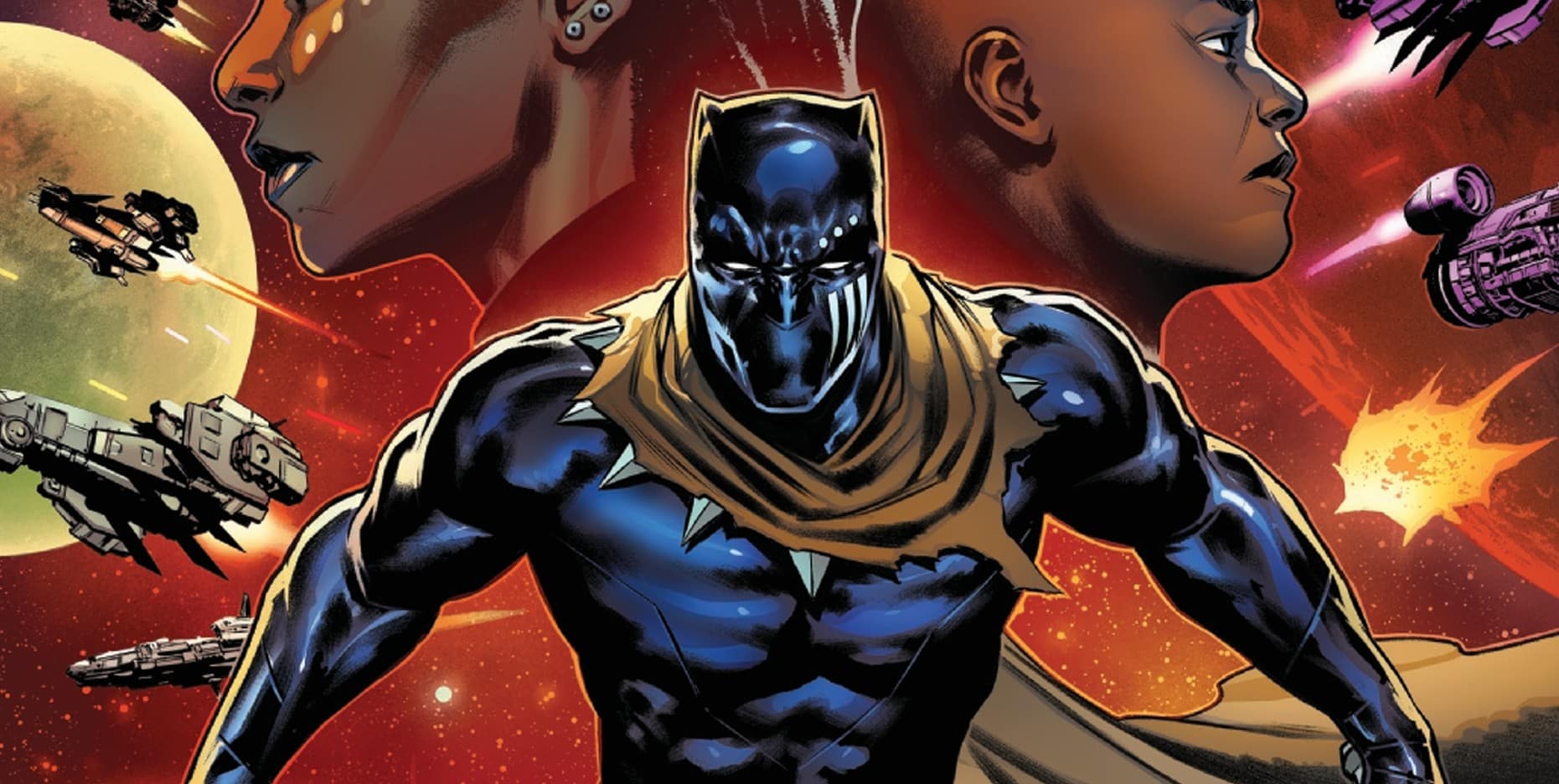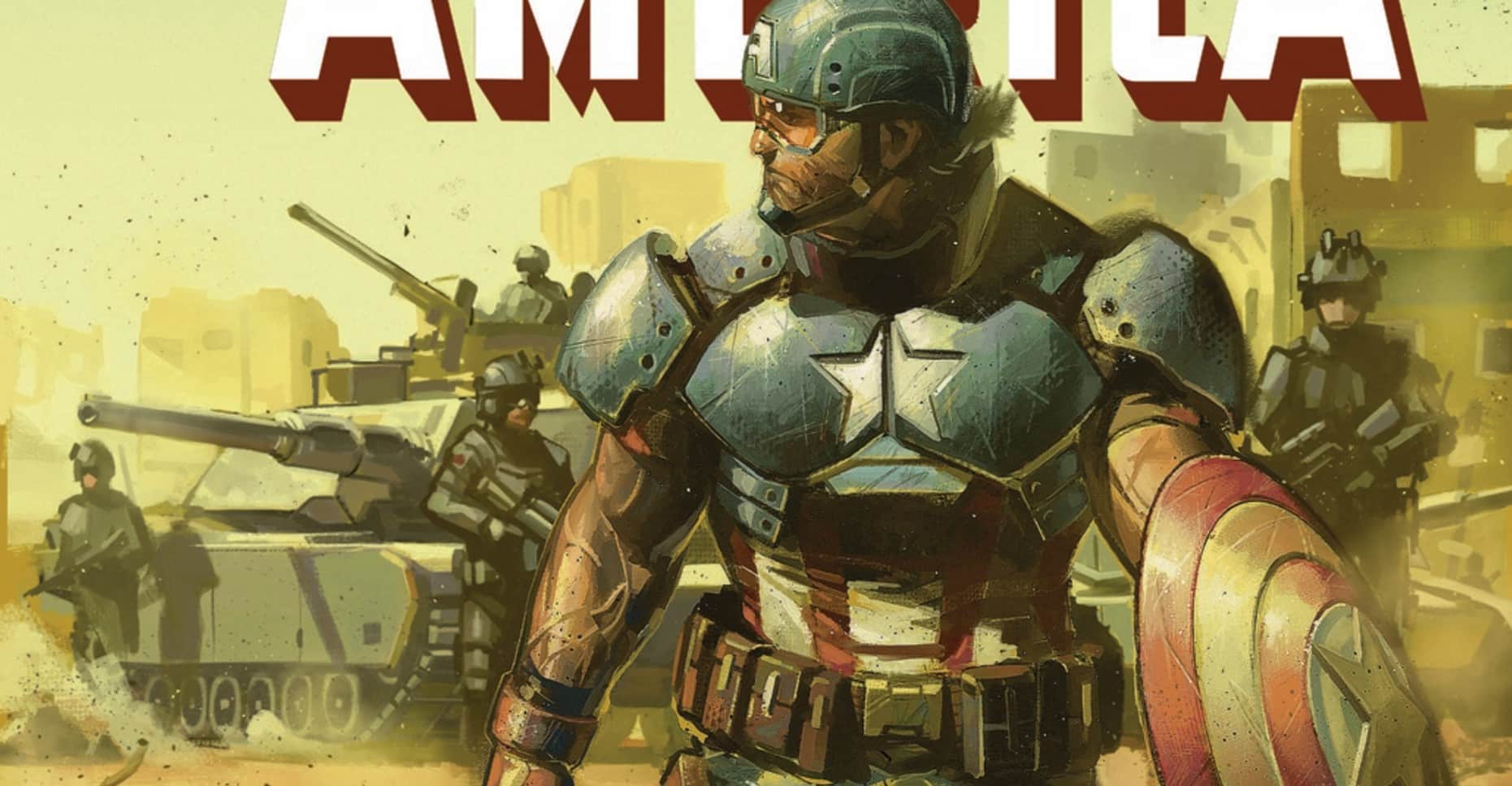When the new series began our other-dimensional-yet-Boricua heroine was doing pretty well in the hero game (remember the West Coast Avengers?) but she missed her old neighborhood, Washington Heights, and her adoptive family there. She zipped home just in time to see their building explode: they’re safe, for now, but whodunit? And why? Written by Kalinda Vazquez, art by Carlos Gómez, colors by Jesus Aburtov, lettering by Travis Lanham.
The first issue of America’s new title raised lots of questions and answered only a few. Where’s the family that raised America from her arrival on Earth-616 up to the point where she showed up in earlier comics, and why does she identify as Puerto Rican when she’s from another dimension? They’re the Santanas, and they’re Puerto Rican too, and they took good care of her for a while.
As for the rest of the questions– who wants America back in New York, and who’s menacing her adoptive family, and why?– we find few clues and no answers in this beautiful, crowded, and slightly predictable second issue, most of which consists of backstory. We follow America’s years as America Santana with the Santana family, a big warm bilingual Washington Heights clan. Grade-school America tells everybody she came from the Utopian Parallel, where her two moms saved the whole dang universe: of course nobody believes her. Then she learns that she can fly. Then she starts fighting street crime, but she’s so young that the cops pick her up and bring her home to her family. The Santanas tell her that given how cops can treat brown people, she’s lucky she encountered nothing worse than a required ride home. “We can’t afford to stick out,” her dad says.
The Santana adults only have their kids’ best interests at heart, and by “best interests” they mean “cool it with the crimefighting,” which is not advice young America can take. Rinse and repeat, until there’s a baby shower, a late arrival with inappropriate clothes (America’s got her trademark denim vest), and a very familiar conversation.
Mother: ”After all we’ve sacrificed for you…”
Father: “We don’t want you to get hurt.”
America: “I have a choice. And if I have to choose between being one of you and being who I really am… well, that’s easy. From now on I’m America Chavez.”
Aaaaand she’s out. I had the same conversation with my (generally lovely) cishet parents on my way to the Pride march in 1995, for what it’s worth. The dialogue lands, though it’s hardly a surprise, and the family scenes leading up to it– for all that Puerto Rico isn’t Pakistan, Washington Heights isn’t Jersey City, and Kalinda Vazquez isn’t Willow Wilson– wouldn’t feel out of place in an early story about Kamala Khan, or about any other teen hero whose family anticipated a tough time.
That said, what makes America special? What sets her apart from other teen heroes? Her Latina heritage and her interdimensional origins, yes, but from moment to moment, it’s her self-confidence. She can punch anyone and go anywhere; she’s a tank, to put it in gamer terms, and she knows it.
That confidence comes across not only in Vazquez’s dialogue (Kamala would not tell her parents off that way!) but in Carlos Gómez’s line art, and in Jesus Abutov’s stellar chromatics, which keep the America Chavez colors (big white star, blue top, red highlights, and brown skin) flying. Also beautiful, and just a bit over the top, the outer borough bowling alley and video arcade where the America of the present day meets up with her mystery antagonist: a glassy shiny twilit building called (wait for it) Indigo Lanes. This chapter of America’s homecoming story may make predictable listening, but gee whiz, is it fun to see.
Stephanie Burt is Professor of English at Harvard. Her podcast about superhero role playing games is Team-Up Moves, with Fiona Hopkins; her latest book of poems is We Are Mermaids. Her nose still hurts from that thing with the gate.






